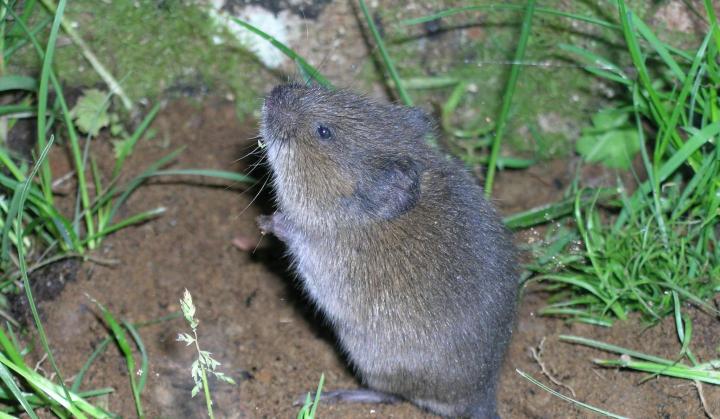Mastering Vole Insect Control: Thorough Insights on Invasion Avoidance and Therapy Methods
As homeowner and caretakers, the presence of voles can pose a considerable difficulty to preserving the stability of our outside areas. Comprehending the details of vole habits is vital in creating efficient bug control methods. By acknowledging the subtle signs of vole infestation early on, we can take aggressive measures to avoid extensive damage. In this conversation, we will certainly check out the nuances of vole actions, look into the recognition of invasion indicators, and uncover one of the most effective prevention and treatment approaches. Remain tuned to discover the insights that will encourage you to grasp vole insect control and safeguard your home against these evasive rodents.
Comprehending Vole Actions
Examining the foraging patterns of voles uses beneficial insights into their habits and habitat preferences. By observing their foraging actions, researchers can acquire a much better understanding of where voles favor to establish their habitats and the degree of their ecological influence.
Research study shows that voles show selective feeding practices, liking roots, seeds, and tubers. This nutritional choice affects their foraging patterns, leading them to locations rich in plants and ground cover. In addition, voles are recognized to develop intricate passage systems for foraging and nesting objectives, showing a high degree of flexibility to their environments.
Recognizing vole actions is necessary for carrying out targeted bug control procedures that disrupt their environment preferences and foraging activities (vole pest control). By studying their actions, professionals can establish more reliable avoidance and treatment approaches to handle vole problems

Identifying Indications of Vole Infestation
Vole problems can be identified by acknowledging details signs of their visibility in an area. One of the most usual signs of a vole problem is the presence of surface area paths.
One more crucial indicator of vole infestation is the visibility of small burrow openings in the ground. Voles dig superficial burrow systems with multiple entryways and leaves. These burrows act as shelter and nesting websites for the voles. Additionally, voles are recognized to leave behind eaten plant stems, origins, and bulbs near their burrow openings, suggesting their feeding task in the area.
Discovering these droppings along runways or near burrow openings can validate a vole problem. By being alert for these indicators, property owners can immediately address vole problems and stop additional damages.
Applying Aggressive Avoidance Actions

In addition, utilizing find more all-natural vole deterrents like castor oil-based repellents or predator urine can act as reliable safety nets. It is likewise suggested to on a regular basis inspect outside spaces for any type of indicators of vole activity, such as runways or delve openings, to address prospective infestations quickly. vole pest control. By taking on these proactive prevention methods, property owners can substantially reduce the possibility of vole damage and keep the wellness and aesthetic appeals of their landscapes
Reliable Therapy Strategies
Incorporating targeted trapping techniques and using accepted rodenticides are crucial components of effective treatment techniques for handling vole invasions. Trapping can be a reliable means to reduce vole populations, especially when placed strategically in their active runways. Break traps and live traps can both be effective, with the last permitting the capture and relocation of voles. When making use of rodenticides, it is vital to adhere to safety and security standards to stop injury to non-target pets and family pets. Area rodenticides in safe lure stations to reduce risks to unintended targets. Additionally, habitat adjustment, such as decreasing ground cover and eliminating resources of food, can aid prevent voles from infesting an area. Regular monitoring and upkeep are likewise essential aspects of effective treatment methods to make sure that vole populations are kept under control. By incorporating capturing, rodenticides, habitat alteration, and constant monitoring, reliable vole parasite control can be accomplished.
Tracking and Upkeep Tips
Regular monitoring allows for the early detection of vole activity, making it possible for punctual treatment prior to infestations get worse. To properly keep track of vole populations, strategically put catches can be utilized in vole runways or near burrow entrances.
Additionally, maintaining a clean and clean landscape is crucial in vole avoidance. Clearing link up away particles, such as heaps of timber or thick plants, gets rid of prospective vole habitats. On a regular basis trimming grass and cutting greenery helps in reducing vole hiding places and decreases their accessibility to food sources.
Additionally, ongoing upkeep of physical barriers, such as fences or wire mesh, is essential to stop vole breach. Checking and repairing any problems to these frameworks makes sure that vole control stays effective in guarding residential or commercial properties from infestations. By integrating these monitoring and upkeep methods into a thorough vole bug control plan, people can successfully manage vole populaces and secure their residential or commercial properties from damage.
Verdict
To conclude, understanding vole insect control requires a strong understanding of vole behavior, the capacity to identify indicators of invasion, applying positive avoidance steps, reliable treatment approaches, and constant surveillance and maintenance. By taking a detailed approach to vole control, people can effectively handle and prevent invasions, inevitably safeguarding their residential or commercial property and bordering environment from damage brought on by these small rodents.
In this conversation, we will certainly explore the nuances of vole habits, dive into the identification of problem indicators, and uncover the most effective avoidance and treatment techniques.Integrating targeted capturing methods and using look at here approved rodenticides are necessary parts of effective treatment techniques for taking care of vole problems. To effectively keep track of vole populaces, purposefully positioned catches can be utilized in vole runways or near burrow entrances. Checking and fixing any damages to these structures makes sure that vole control continues to be reliable in guarding homes from invasions. By including these surveillance and upkeep techniques right into a thorough vole parasite control strategy, individuals can effectively manage vole populations and protect their residential or commercial properties from damage.